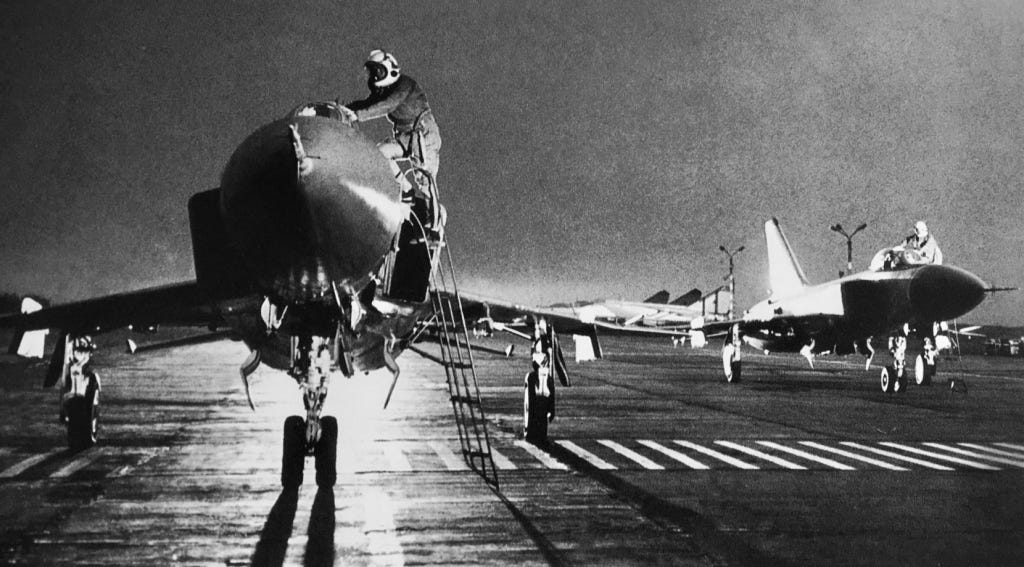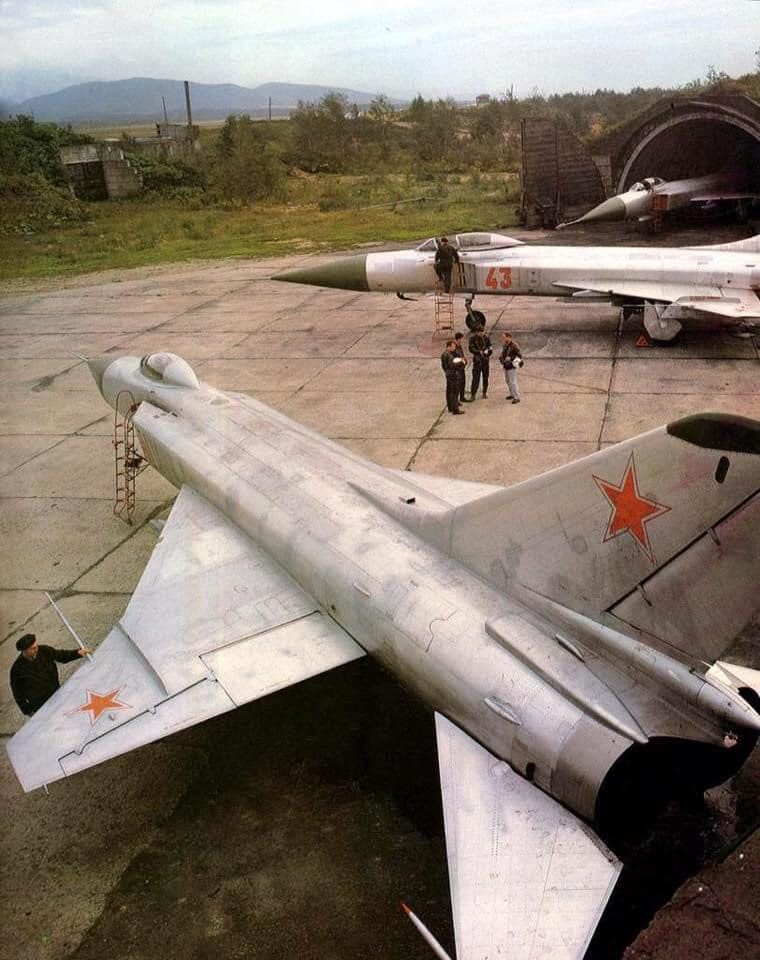The Su-15 Flagon: Air Inferiority Complex Fighter?
In conversation with a Su-15 pilot, thoughts on an underrated interceptor and how much the Russian military values the lives of its people
Speaking to a former Soviet air force pilot convinced me the Su-15 was far better, and undoubtedly more significant, than is commonly thought. The Soviet Sukhoi Su-15 was among the best interceptors of the 1960s and ’70s. It had better acceleration and initial climb rate than the US F-106; compared to the British Lightning it had double the weapon-load and double the endurance. Vitally, this supersonic warplane was available in far larger numbers than either its British or American counterparts.
Before interviewing former ‘Flagon’ pilot Valeri Shatrov, I had a vague idea of the Su-15 as a primitive interceptor with obsolete systems that lacked agility and was infamous for the shootdown of Korean Air Lines Flight 007 in 1983. I found his opinions and recollections absolutely fascinating and, in some cases, revelatory.
I should also note that I do not take any pilot’s opinions as entirely objective as most pilots have a bias towards their machine, but Shatrov’s answers were candid – and at times critical enough to be credible.
The Soviet approach
The West’s opinions of Soviet warplanes have often been wrong. Some overestimated, some underestimated, and some misunderstood. Analysts often saw Soviet aircraft as inferior facsimiles of Western types, or else wildly inflated their true capabilities. The facsimile claims have a meaningful historical origin. The Tupolev Tu-4 was a reverse-engineered B-29 Superfortress. The Tu-4 was an epic project. It was no easy thing to copy the most sophisticated aircraft in the world. It took the expertise of over 850 factories and institutes, and involved the creation of over 105,000 drawings. However, with the brutal determination of Stalin driving its completion, quick work was made of it. The design was completed in less than a year and it entered service in 1947. The Tu-4’s (and so B-29’s) design informed the Tu-95 that remains in service today. 70-odd years later, the Russian Air Force’s ‘Bear’ carries Superfortress ‘DNA’ in its fuselage dimensions, circular cross-section, the pressurised shell fore of the wings and its thick wing roots.
Keep reading with a 7-day free trial
Subscribe to Hush-Kit Aviation Newsletter to keep reading this post and get 7 days of free access to the full post archives.





